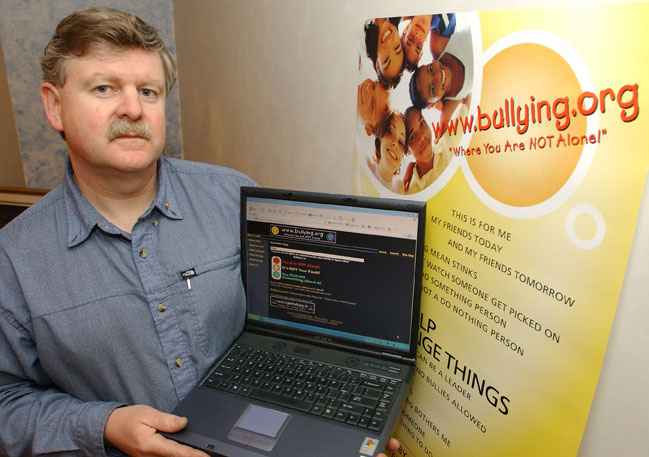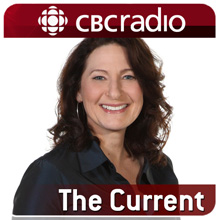Mosaic Stories: Tony Elain by Bill Belsey
Perceptions change with perspective.
At first glance, the intriguing artwork in the foyer of the Cochrane Ranchehouse entitled “Trust”, looks like a horse, lovingly embraced. Upon closer inspection, you can see this marvellous mosaic is actually made up of 216 individual paintings that were created by a team of local artists, coordinated by artist Lewis Lavoie of St. Albert, Alberta, it was unveiled on Canada Day, 2007.
Many Canadians would be surprised to learn that the first person to use the term “mosaic” to describe the national character of Canada was, in fact, an American. In 1922, Victoria Hayward referred to our country this way in the published work, Romantic Canada, a piece of travel writing detailing her journey across our fair land.
A community is also a mosaic. Viewed from a distance we develop general impressions. Moving closer we can begin to better appreciate those who make up the mosaic that is Cochrane, Alberta. My new column, “Mosaic” strives to do just that; help us know our community better by digging a little deeper. In this digital age of Social Media where we might not truly know those we are interacting with, we might be tempted to communicate things online that we might never say or do in person. In an increasingly technological time, we need to actively re-connect in more humane ways. I hope that my Mosaic column might help us to move beyond the big picture and look more closely so that we might better understand the individuals who are part of Cochrane’s community canvas.
Damascus, Syria is among the oldest continuously inhabited cities in the world and it was in this culturally rich and historic community that Tony Elain was born on April 3, 1943. Tony was a middle child, with four brothers and one sister.
In a telling anecdote from his childhood, Tony recalls that every Sunday he and his friends would ride their old bikes for four or five hours so that they could travel to the mountains where they would find trees, ripe with dates and other fresh fruit. They would pick and devour these organic treasures, savouring the succulent juices on sizzling Syrian summer days. Tony fondly remembers having picnics in the mountains, drinking fresh water directly from the mountain springs. “Most people couldn’t afford a car, so we used bikes to get around,” he reflected. For Tony, the sheer freedom and independence of these cycling sojourns were just as important as the delicious reward at the end of their tour.
After saving some money, Tony’s dad eventually bought an old 1936 car made by the British Standard Car Company. Tony recalled, “In those days it was very hard to get a new vehicle.” He remembered driving this old car into the mountains without a driver’s license but feared for his life when the brakes failed as he was driving back down on their return home. His mother was constantly hitting her head on the roof of the car that had little, or no suspension, as they drove on those bumpy, mountainous roads.
Tony joined his father and apprenticed in the family shoe repair business from the age of ten to fifteen years. His father was a well-respected master of his trade. In a bold move that would display his drive and foreshadow his rapidly-developing business acumen, Tony left his father’s business and opened his own shop just two blocks from his dad’s. Tony charged less money than his dad and his business flourished, which made Tony’s mother proud of her son’s work ethic and success, but his father was unhappy about the unwelcome competition and eventually, he convinced Tony to reunite with him as one family-run business.
When young men in Syria turn eighteen, they are required to serve in the military. Tony did his duty for two years. Upon completing his service, his family moved to Lebanon, where they lived in Beirut for five years. “Lebanon was a nice country where there was more freedom,” recalls Tony. He stayed with his family in Lebanon for five years. Tragically, during this time, Tony’s mother became ill and died. At that time, Tony’s sister had emigrated to Canada with her husband, and they settled in Calgary. Tony told his father that he also wanted to go to Canada because he felt that he would have a better future there. With Tony’s sister as his sponsor, he came to Canada in 1971. The emigration process had taken him two years.
His father and brother encouraged him to try it and if it didn’t work out, he could come back to Lebanon. Tony was having none of that, he was determined to succeed in Canada. The thought that going back would have meant admitting defeat, he wasn’t about to let that happen.
He arrived in Calgary, via Montreal in March of ‘71. Only a day before he had been swimming in the sea basking in the warmth of Lebanon, now he was then confronted by a frigid Canadian winter. Although he had seen snow before in the Mountains of Syria, he couldn’t believe seeing snowbanks as high as his plane seat when they landed in Montreal!
When Tony’s brother-in-law picked him up at the Calgary airport, Tony watched in horror as the car slid wildly back-and-forth on the slick roads. “I don’t think that I’ll be able to drive here,” Tony thought at the time.
After moving in with his sister in Canada, Tony took whatever jobs he could find. He worked at a roofing job in the middle of winter for just 90 cents an hour. “I had never been that cold in my life, there were times that I was so cold that I cried. I didn’t have proper winter clothes, no winter jacket or warm footwear. I would slide on my feet just trying to walk down the street,” he recalled with a shiver. “There were times when I thought, ‘What am I doing here? But I stuck it out’”. Tony would not admit defeat.
After a while, Tony got a better-paying job, working for $3.00 an hour at a cabinet-making company. With his hard-earned savings, Tony opened “Tony’s Shoe Repair” shop in Market Mall. He regularly worked fourteen-hour days. During this time, he was able to save enough for a down payment on a small home in the Ogden neighbourhood of Calgary that cost just over $18,000. After three years in Calgary, Tony’s father came for a visit. Tony was proud to show his father the new life he was crafting in Canada.
In 1974, Tony returned to Lebanon to marry Ousyma, a girl he had known from his days growing up in Damascus. It was an arranged marriage between her parents and his father. On August 18th, 2019, Tony and Ousyma celebrated forty-five years of marriage.
When asked about some of the differences between Canada and Syria beyond the obvious contrasts in climate, Tony mentioned being paid. “When you do work for people in Syria, customers often won’t pay you until well after your work is done for them. Some don’t ever pay you. It can be hard because you don’t want to argue with your neighbours, friends and even family. Here, in Canada, people pay you right away. Sometimes, people appreciate my work so much, they give me a tip”, he said with pride.
Tony also marvels at the food selection in Canada. “Here in Canada, we have so much choice, it’s great! Sometimes when we are in Penticton, we pick up lots of fresh fruit.”
“Housing is also different here. In Canada, houses are so nice. We have so much space in Canada. In Syria, many people live in apartments, most cannot afford to have a house. When Syrians come to Canada, they think that we live so well.”
“Canada has excellent education and health care. We have a healthy democracy. We have many rights and freedoms. Canadians should NEVER take these things for granted. Canadians understand that if we all pay a little more in taxes, then more people are helped. More people have a chance to succeed. In some other countries, everyone is out for themselves first. Of course, we should all work hard. I have worked very hard in my life for my family, but I was raised to also help others. Canada is a country where we try to help one another, this is why I love Canada, it’s not just about me, it’s also about us.”
When asked what values he has tried to instil in his children, Tony responded, “Work hard. Don’t give up easily when you have a challenge in business, or in life. Do quality, honest work. Don’t cut corners. Give people the best you can, even if you have to lose money sometimes. You are your reputation.”
After many years of extremely hard work and shrewd investing, Tony now owns the buildings on Cochrane’s main street that includes “Tony’s Shoe Repair”, “Donair on the Run”, “Incredible Florist”, “Tony’s Western Wear” and “Cochrane Floors and More.” Tony’s son, Camille runs “Donair on the Run” that often receives rave reviews from customers who come from far and wide to enjoy the delicious donair, shawarma, falafels, baklava and more. Tony’s son Mike manages “Tony’s Western Wear”, whose selection of boots and clothing is impressive and their customer service is legendary. Clearly, the apple doesn’t fall far from the tree in the Elain family when it comes to running successful businesses. Just like Tony learned from his father, Tony’s sons are learning from him.
In addition to raising his own family. Tony Elain has sponsored 120 others from now war-torn Syria, who have made Canada their new home and, like Tony, they are working hard to make many valuable contributions to Canadian society.
Left to right: Mike, Tony and Camille Elain.
When asked what his proudest achievement is, Tony replied without hesitation, “My family!”
“I am VERY happy that I chose to live in Canada. Canada has been so good to my family and me. It is the greatest country in the world!”
The next time you’re walking downtown, drop in and say hi to Tony and his sons. Their family is a very special part of our Cochrane mosaic, something I’ve since learned after I took the time to get a little closer.
*If you know of others who have come to Cochrane from abroad and whose story should be celebrated in my “Mosaic” column, please get in touch, ourmosaicstories@gmail.com.




